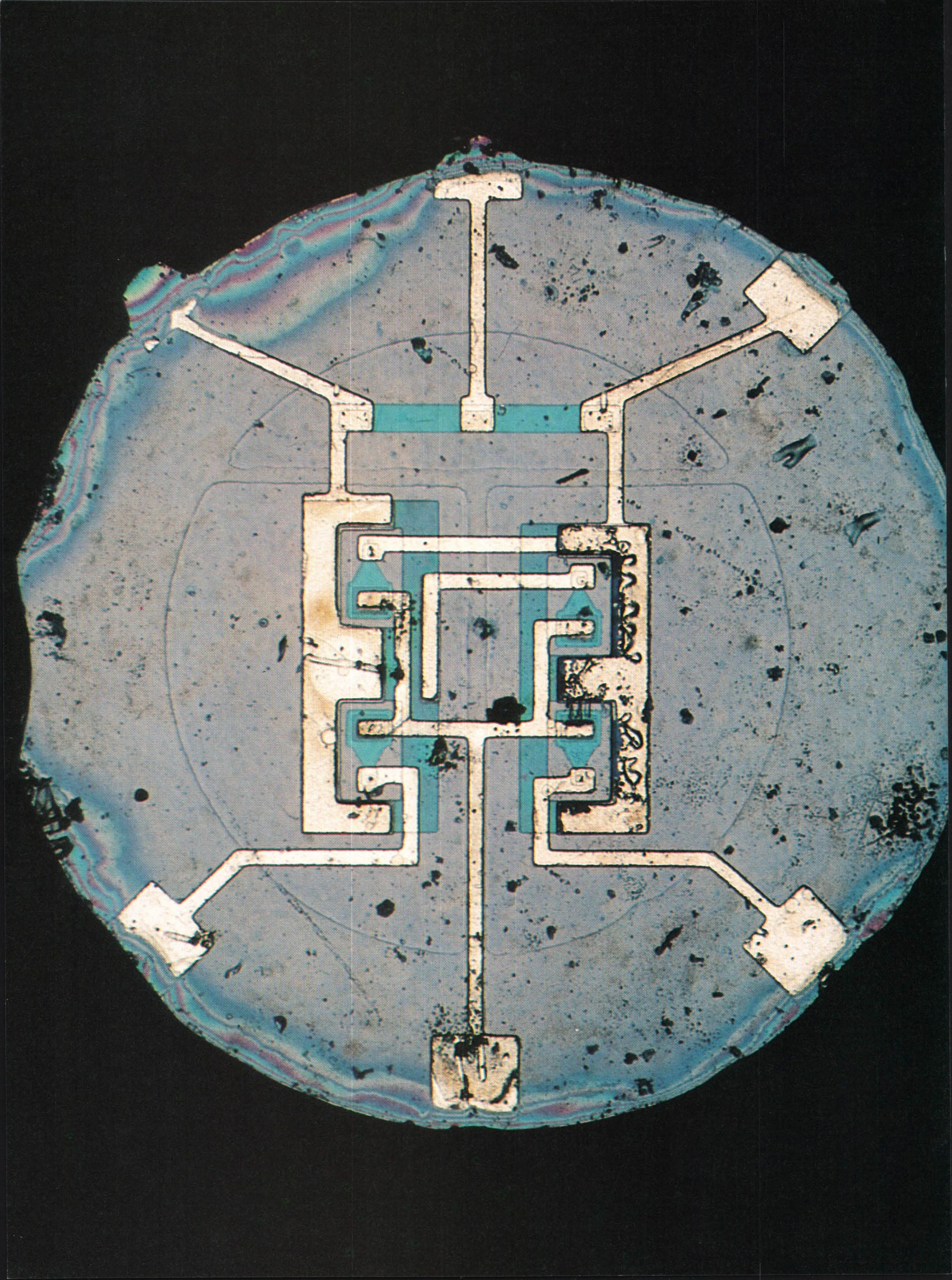If you take a bale of hay and tie it to the tail of a mule and then strike a match and set the bale of hay on fire, and if you then compare the energy expended shortly thereafter by the mule with the energy expended by yourself in the striking of the match, you will understand the concept of amplification.
William Shockley, co-inventor of the transistor
On 23 December 1947, a small team of scientists at Bell Telephone Laboratories in Murray Hill, New Jersey, created the transistor. One of the most important inventions of the twentieth century, the transistor is a solid piece of material – as solid as a rock – with the electrical properties of a vacuum tube. Like a tube, it can amplify current, detect radio waves, and serve as a switch; but, unlike its finicky and fragile counterpart, it turns on instantly, generates almost no heat, uses little power, does not burn out, costs pennies to make, is practically immune to vibration and shock, and occupies about as much space as a pencil eraser. The transistor revolutionized electronics, all the way from hearing aids to computers.

A transistor is a semiconductor, a class of materials whose ability to conduct electricity lies between that of insulators, like rubber, and conductors, like copper. Silicon, the chief component of sand, is the most plentiful semiconductor, followed by such exotic materials as germanium, selenium, gallium arsenide, and lead sulfide. Early radios, or crystal sets as they were called, used galena (or lead sulfide) crystals to detect the audio portions of radio waves. You simply hooked up an earphone to a galena crystal and eavesdropped on the broadcasts quite literally. Very crude devices, crystal radios didn’t use electricity and lacked the means to amplify audio signals. (You can buy a crystal radio kit at an electronics hobby shop for $5.)
In 1906, the American physicist Lee DeForest invented a device that could detect and amplify radio signals. Called the three-electrode tube, or triode, it had three basic parts: a cathode, which emits electrons; an anode, which collects electrons; and a grid, typically a wire mesh between the cathode and plate, which acts as a valve, allowing the cathode’s electrons to jump through the insulating vacuum to the anode. A fourth component, a filament, is also necessary; it heats up the cathode, boiling off the electrons that pass to the anode. (By the way, a tube is called a thermionic valve in Great Britain, thermionic referring to the emission of electrons by heat.) By linking an antenna to the grid, and fluctuating the grid’s voltage, you could pick up radio signals. As the electrons surged from cathode to anode, the audio portion of the waves was amplified. The triode made radio a practical means of communication.

The rise of quantum mechanics gave scientists a powerful theoretical tool for the analysis of electrical phenomena, and semi-conductors were given a closer look beginning in the mid-1920s. But the research didn’t get very far; semiconductors are highly susceptible to contamination, which alters their electrical characteristics, and it wasn’t until the early 1930s that pure silicon and germanium were available. Meanwhile, scientists in the United States and Great Britain discovered that flying objects reflected radio waves – and radar was born. At the time, however, tubes couldn’t detect short waves, which were best for spotting low flying aircraft, and physicists turned to semiconductors, hoping to turn them into effective shortwave detectors. The research was stepped up considerably when the war broke out, with universities and industrial labs all over the United States and England participating in the effort.